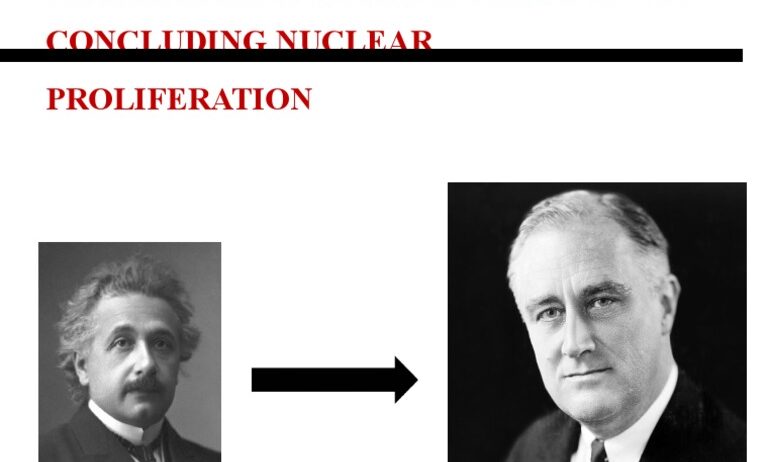When contemplating the complexities of nuclear weaponry, one might ponder a rather playful question: Does nuclear weaponry obey the law of energy conservation? At first glance, this question may seem simplistic, especially in light of the terror that nuclear weapons represent. However, delving into the intricacies of physics and the fundamental principles that govern our universe reveals a fascinating interplay between the destructive power of nuclear arms and the immutable laws of thermodynamics.
The law of energy conservation, a cornerstone of physics, states that energy cannot be created or destroyed but can only change forms. This principle applies universally, encompassing everything from the smallest particle to vast cosmic phenomena. When we examine nuclear weapons, we enter a domain where energy transformation plays a pivotal role. To comprehend the relationship between nuclear weaponry and this fundamental law, we must first understand the mechanisms that enable a nuclear explosion.
In a nuclear bomb, the release of energy occurs mainly through two processes: fission and fusion. Fission, or the splitting of heavy atomic nuclei such as uranium-235 or plutonium-239, releases an immense amount of energy. This energy originates from the strong nuclear force that holds the atomic nucleus together; when these nuclei split, some of that binding energy is released as kinetic energy and radiation. Fusion, on the other hand, occurs when light nuclei, such as hydrogen isotopes, combine under extreme temperatures and pressures to form heavier nuclei, releasing energy in an even more potent manner. Both processes exemplify the transformation of stored nuclear energy into explosive energy, illustrating that energy conservation remains paramount.
One might argue that the annihilation caused by nuclear detonations presents a paradox to energy conservation. After all, how does one reconcile the total destruction witnessed at ground zero with the idea that energy is invariant? The answer lies in understanding that while matter, in the form of mass, is converted to energy during these violent reactions, the overarching law remains intact. According to Einstein’s mass-energy equivalence principle (E=mc²), mass can indeed be transformed into energy, suggesting that the mass of the destroyed material is converted to energy, thereby obeying the law of conservation. Thus, even in the cataclysmic aftermath of a nuclear explosion, no energy is lost; it simply changes form, adhering to the law of conservation.
Yet, the question remains: if nuclear weaponry adheres to the law of energy conservation, how do we reconcile its catastrophic effects on human civilization and the environment? The energy unleashed during a nuclear detonation possesses the capacity to obliterate cities, contaminate ecosystems, and wreak havoc on global climatic systems. This presents a formidable challenge to environmental stability, raising concerns about the balance between technological advancement and ecological responsibility. Can we consent to the existence of such destructive potential, fully comprehending the physics behind it, while also acknowledging the moral and ethical implications it entails?
Moreover, the impact of nuclear weaponry extends beyond immediate destruction. The energy released in the form of radiation has lingering consequences, affecting not only those in proximity to the explosion but also future generations. Radioactive isotopes produced during nuclear reactions emit harmful radiation for years, contributing to chronic health issues and environmental degradation. Herein lies a unique dilemma: even though energy is conserved, the destructive fallout from nuclear potential creates a type of energy imbalance, wherein the environment suffers irreparable damage and human lives are imperiled.
This dichotomy invites further examination: how do nations reconcile their security needs with their environmental responsibilities? The science is unequivocal—the advancement of nuclear technology, whether for energy or weaponization, fosters a profound ethical dilemma. Can one justify the continued pursuit of nuclear capabilities when the existential risks they pose to humanity and the planet are so stark? The challenge is twofold: to address the immediate security threats presented by rogue states or non-state actors while simultaneously curbing the potential for environmental devastation that accompanies the existence of these weapons.
Additionally, the push for nuclear disarmament emerges as a critical discourse in this arena. Advocates for disarmament argue that reducing nuclear arsenals worldwide could significantly mitigate human suffering and environmental harm. Decommissioning nuclear weapons is tantamount to obeying the law of energy conservation in a broader sense; by dismantling these devices, humanity takes a decisive step towards redistributing energy resources towards sustainable initiatives rather than towards destruction.
In conclusion, while nuclear weaponry does obey the law of energy conservation—the energy released is merely a transformation of mass—it also presents formidable challenges that extend beyond scientific principles. The balance between security and environmental stewardship remains precarious. As global citizens, the onus lies upon us to weigh the implications of technological advancements against the moral fabric of our existence on this planet. The rhetorical inquiry into whether nuclear weaponry obeys the fundamental laws of physics opens up a broader discussion about responsibility, ethics, and the trajectory of humanity’s future in an increasingly unstable world.








